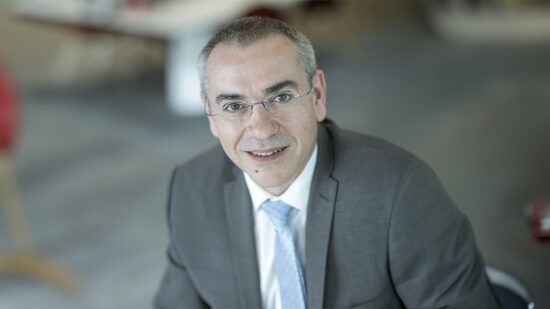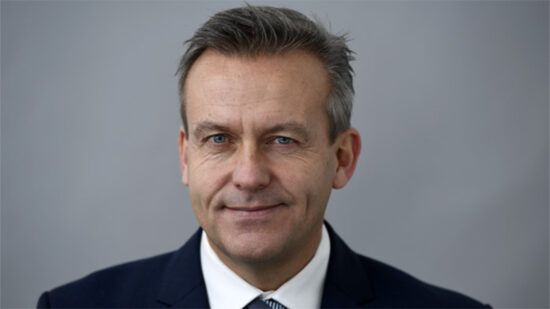As 2024 draws to a close, it becomes a time for reflection on the year’s developments and predictions for the coming year. So, within PA Future‘s end-of-year series New Era, members of the sustainable investment community will be doing just that, as well as sharing some eco-friendly Christmas hacks and the one thing they want to see under the tree this year to accelerate the transition.
Here, Callum Wells, manager of the Castlefield Thoughtful Portfolio funds, discusses the firm’s successful initiative to prevent gym harassment, why they are concerned about unintended risks under SDR labels for portfolio management, and letters to central bank governors.
What was the most successful sustainable investment initiative your team undertook in 2024?
We took onboard some suggestions from our client, EIRIS Foundation, earlier this year to support their stewardship initiative relating to fossil fuel financing. As part of a coalition of asset owners, the foundation sought changes in asset managers’ voting and engagement policies to combat the financing of new fossil fuel projects. We were delighted to include these changes into our voting guidelines and our engagement agenda, and hope that many of our peers will join us in doing so.
Were there any unexpected challenges or triumphs in your sustainability journey this year?
Given our position within the industry, we often have a lot of success with collaborative engagements as part of investor action groups. That said, we still take every opportunity to drive engagements ourselves – our recent engagement with The Gym Group is a fantastic example of that. An ‘Ask for Angela’ trial has been launched across a number of fitness and leisure centres after its success in bars and clubs across the country. The initiative encourages those in an unsafe or vulnerable situation to discreetly ask staff for help by using the code word ‘Angela’. This follows a number of recent articles calling out gym harassment, and a rise in social media trends encouraging women to speak out about their experiences. This gave us a fantastic opportunity to raise questions about safety with Gym Group, asking them to review their policies around the prevention of harassment and see where these could be strengthened to provide a safer, healthier and more inclusive environment for members.
SDR has been rolled out to the UK funds market. How has this adopted within your business? Has this been a positive development?
SDR has been a massive investment for the team and the firm this year. We’ve been monitoring the policy position since inception and remain supportive of the intentions behind the requirements and the labelling regime. That said, we’re cognisant that the policy is still relatively new and there are details yet to be worked out regarding implementation. As an open-architecture, multi-asset manager, it’s not immediately clear how the rules work for our portfolio funds. I expect we’ll get much needed clarity when the FCA release their policy statement relating to MPS early next year. For the time being, Castlefield has decided to follow the ‘Naming and Marketing Rules’ approach.
We initially explored adopting a labelled approach but quickly recognised it would require meaningful changes to our investment philosophy and process, without clear benefits for clients; whilst also introducing potential risks to client outcomes. We’ve invested thoughtfully – as we describe it – for over 20 years, introducing client-led enhancements to our process along the way where the benefits are clear. We remain open to the continued evolution of our platform, though only where the client benefit is clear. For now, we are content to take a ‘wait and see’ approach.
What do you predict will be the biggest trend in sustainable investment in 2025? Are there any emerging sectors or trends you are particularly excited about?
Although it’s cliché when thinking about sustainable investment, I think a renewed focus on energy investment will dominate. Two big secular shifts – the rise of Artificial Intelligence (AI) adoption and the reindustrialisation of the West – are set to put enormous strains on grids that are already navigating a generational shift away from fossil fuels toward renewable energy generation.
How do you think global events or economic shifts might influence sustainable investing next year?
It’s hard to ignore the pressures sustainable investing may face under a changed US administration. Rhetoric has been thick, though what translates into meaningful policy remains to be seen. Sustainable investing is a broad church, with many familiar sectors already reaching a level of economic self-sufficiency. This may obviate the need for the large sums of government subsidy that the industry had been used to in the last decade.
What are the top challenges sustainable investment teams will face in 2025, and how will you tackle them?
A collective myopia. A higher-for-longer interest rate environment naturally compresses investors’ time horizons. Short-time horizons typically do not favour sustainable investing, given the long-duration nature of the cash flows associated with most sustainable investment offerings. That said, the sector doesn’t have to contend with the same challenges around valuations that it saw immediately post pandemic. The solution never changes: focus on those businesses that are able to sustainably create value for their customers, that can be acquired at attractive valuations. While the market’s time horizon mechanistically contracts in response to rates, we stand ready to pick up those businesses able to create sustainable, long-term value for shareholders.
If you could set one new industry standard or regulation in 2025, what would it be?
As we enter the season of consumption, it’s hard for me not to focus on the physical waste. I’d like to see producers responsible for the entire lifecycle of their production. Although – like everyone else – I don’t necessarily welcome higher costs, I think this is the only way to ensure producers reflect the total cost of their products to consumers.
What’s the most eco-friendly Christmas hack you’ll be trying this year?
We’ve opted for a living Christmas tree this year. With my ‘reduce, reuse, recycle’ hat on, I did suggest to my wife that we skip the tree altogether, though I compromised after being accused of being miserly. We’ve gone a step down in the hierarchy and opted for a reusable solution. Ask me how it’s going this time next year.
What’s the one thing you’d love to see under the tree to help accelerate sustainability in 2025?
Lower interest rates would certainly help, let’s hope Andrew Bailey and Jerome Powell are getting my letters.








